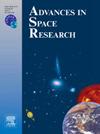An integrated approach for gully erosion susceptibility mapping and factor effect analysis
IF 2.8
3区 地球科学
Q2 ASTRONOMY & ASTROPHYSICS
引用次数: 0
Abstract
Gully erosion is one of the major global environmental threats that frequently affects semi-humid to arid Mediterranean regions and contributes to a wide range of ecological problems. Recognizing vulnerable areas to gully erosion and creating a comprehensive gully erosion susceptibility map (GESM) can assist in the lessening of land degradation and damage to numerous infrastructures. The primary goal of this research is to build a random subspace-based function tree (RSFT), i.e., an ensemble model, and compare it with other standard models such as Fisher’s linear discriminant analysis (FLDA), Nave Bayes tree (NBTree), J48 Decision Tree, and random forest (RF) models in order to identify which model generates the most accurate outcomes. Overall, a total number of 489 gully sites were utilised for modelling and validation purpose, with 377 (70 %) used for modelling and 112 (30 %) used for validation. Fourteen salient gully erosion conditioning factors (GECFs) were implemented for constructing the GESMs. The efficacy and significance of several GECFs were assessed through the random forest, or RF, model for gully erosion modelling. Using the GES maps, we computed the success rate curve (SRC) and prediction rate curve (PRC), as well as their areas under the curves (AUC). The AUC (SRC, PRC) scores for the RSFT model were 0.906 and 0.916, consequently, while the outcomes for the RF, NBTree, FLDA, and J48 models were 0.875 and 0.869, 0.861 and 0.859, 0.792 and 0.816, and 0.779 and 0.811. AUC findings indicated that the RSFT model delivered the most precise predictions, trailed by the RF, NBTree, FLDA, and J48 models. In terms of RMSE, each of the models performed adequately; however, RSFT exhibits the lowest RMSE values of all models, with 0.31 (training dataset) and 0.29 (validation dataset), which shows that RSFT is substantially more accurate than other models in forecasting gully erosionThus, the results of this research can be used by local managers and planners for environmental management. The results from our study suggests that all of the GESM models have high efficiency, and can be employed to formulate adequate measures for safeguarding of soil and water.
求助全文
约1分钟内获得全文
求助全文
来源期刊

Advances in Space Research
地学天文-地球科学综合
CiteScore
5.20
自引率
11.50%
发文量
800
审稿时长
5.8 months
期刊介绍:
The COSPAR publication Advances in Space Research (ASR) is an open journal covering all areas of space research including: space studies of the Earth''s surface, meteorology, climate, the Earth-Moon system, planets and small bodies of the solar system, upper atmospheres, ionospheres and magnetospheres of the Earth and planets including reference atmospheres, space plasmas in the solar system, astrophysics from space, materials sciences in space, fundamental physics in space, space debris, space weather, Earth observations of space phenomena, etc.
NB: Please note that manuscripts related to life sciences as related to space are no more accepted for submission to Advances in Space Research. Such manuscripts should now be submitted to the new COSPAR Journal Life Sciences in Space Research (LSSR).
All submissions are reviewed by two scientists in the field. COSPAR is an interdisciplinary scientific organization concerned with the progress of space research on an international scale. Operating under the rules of ICSU, COSPAR ignores political considerations and considers all questions solely from the scientific viewpoint.
 求助内容:
求助内容: 应助结果提醒方式:
应助结果提醒方式:


